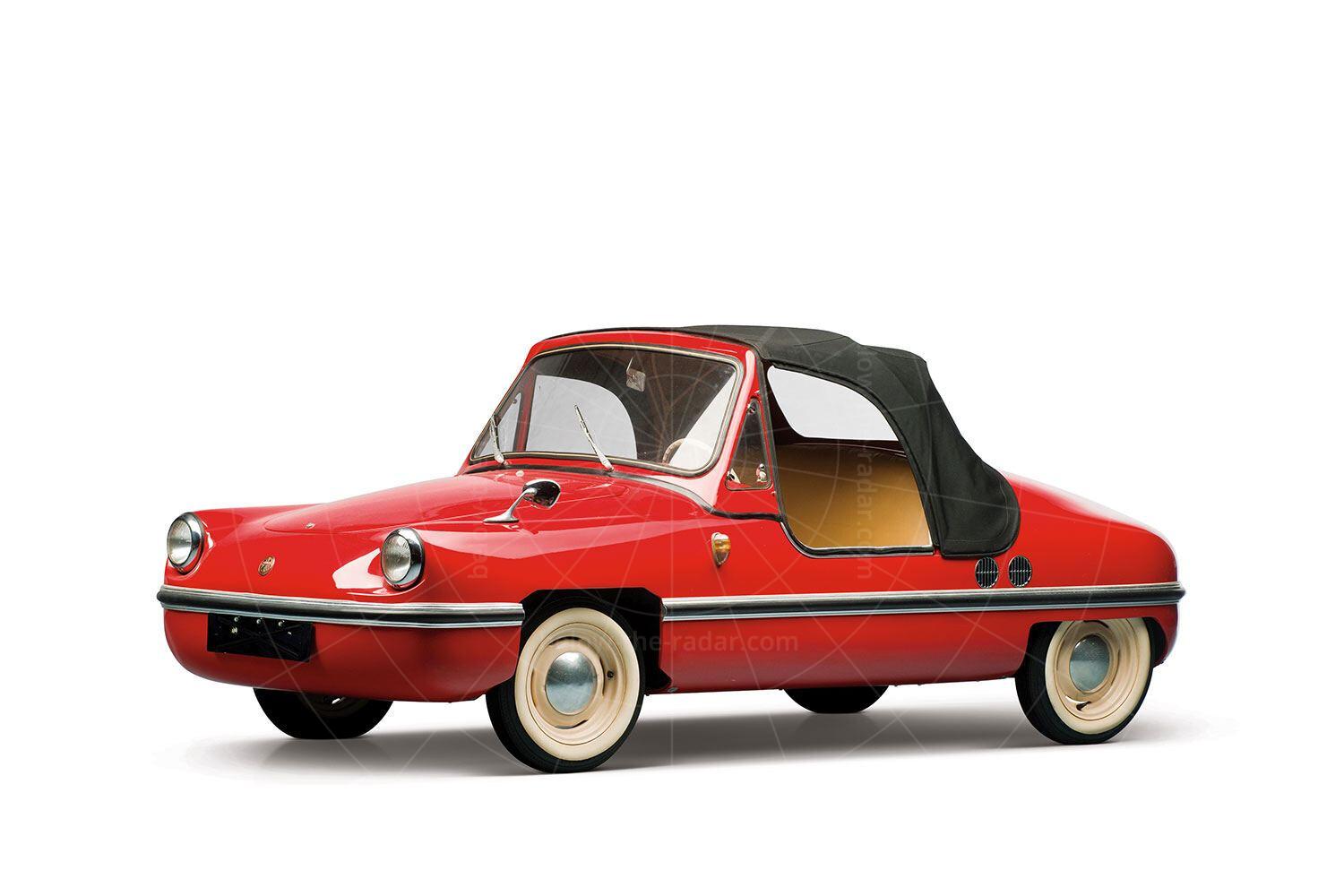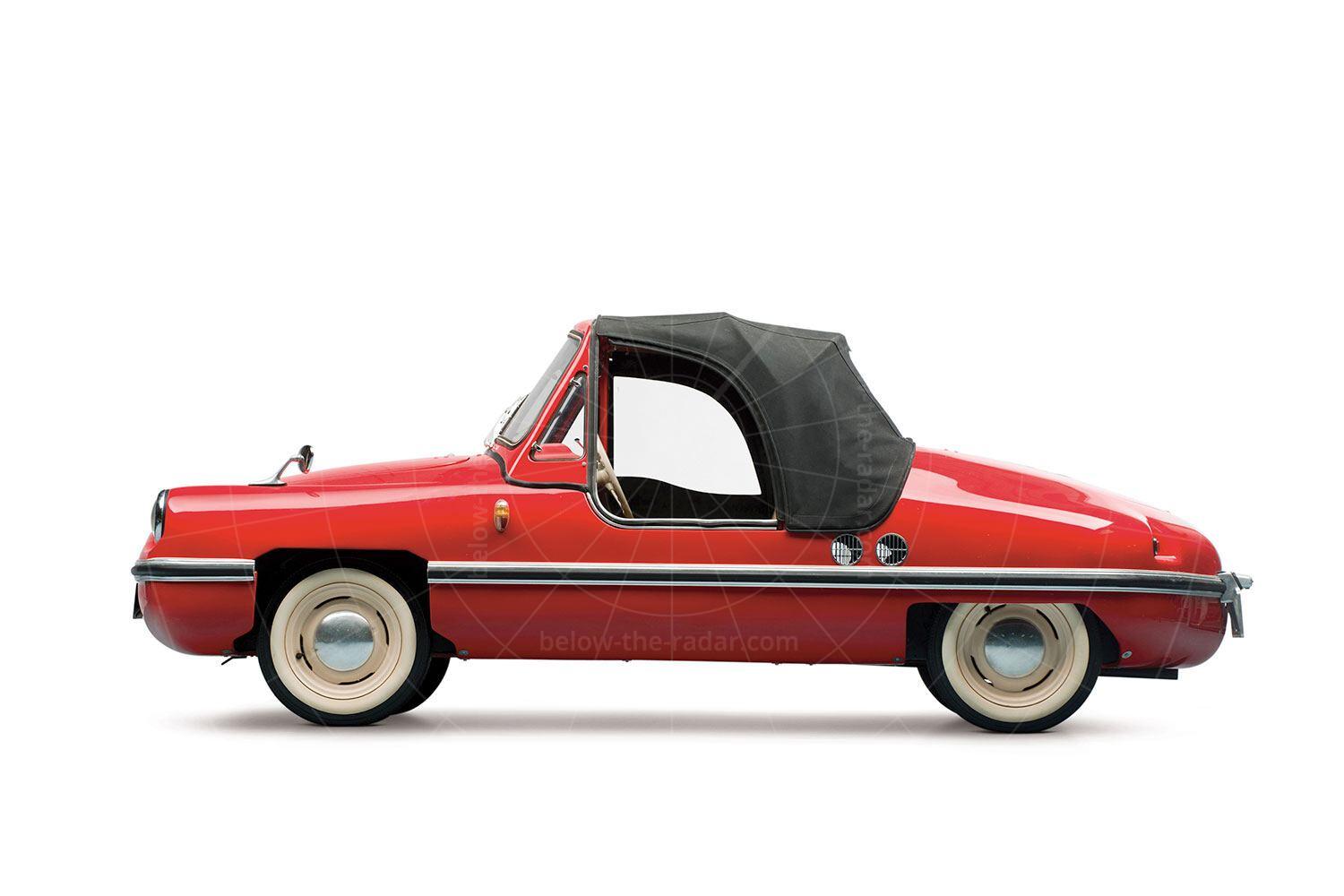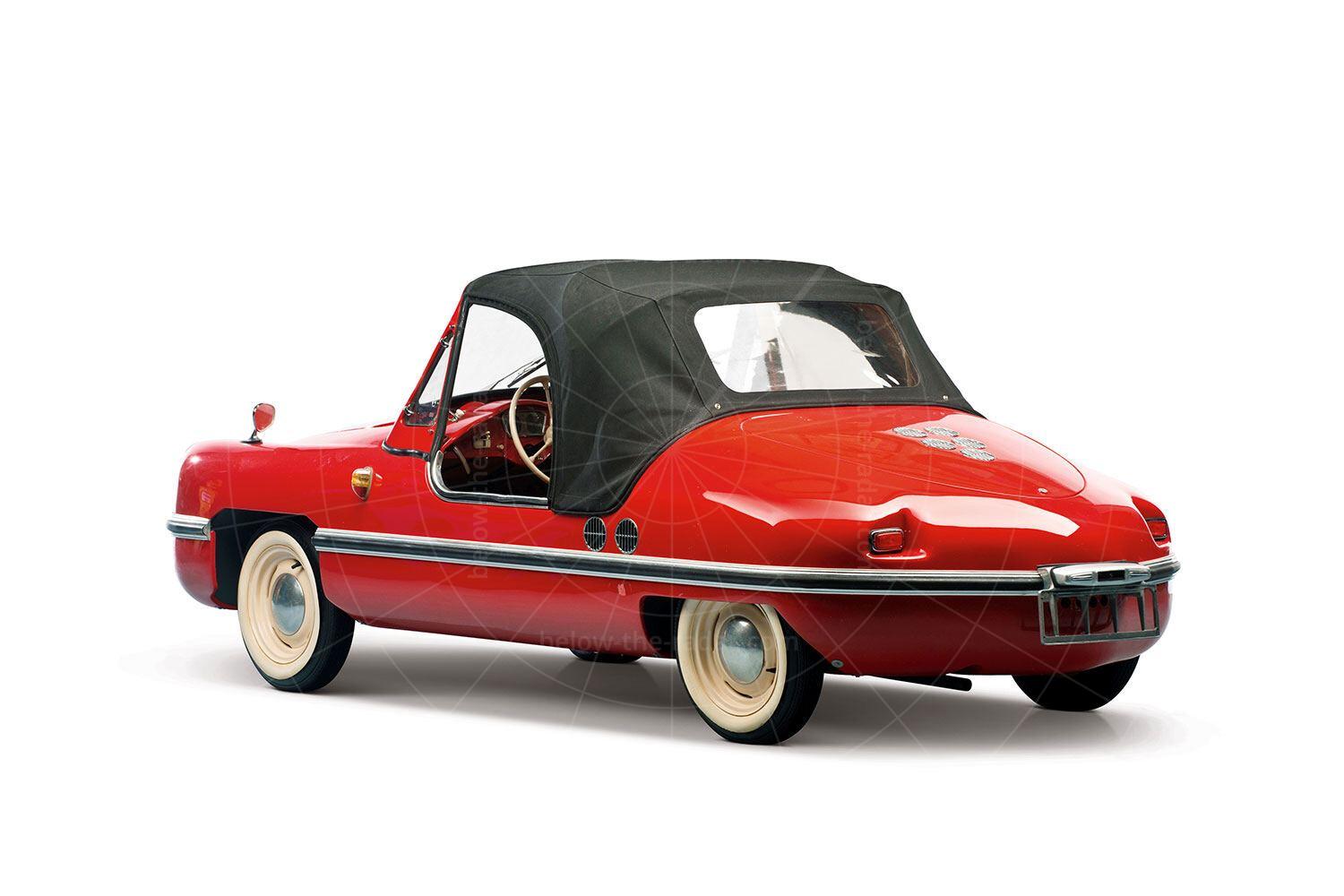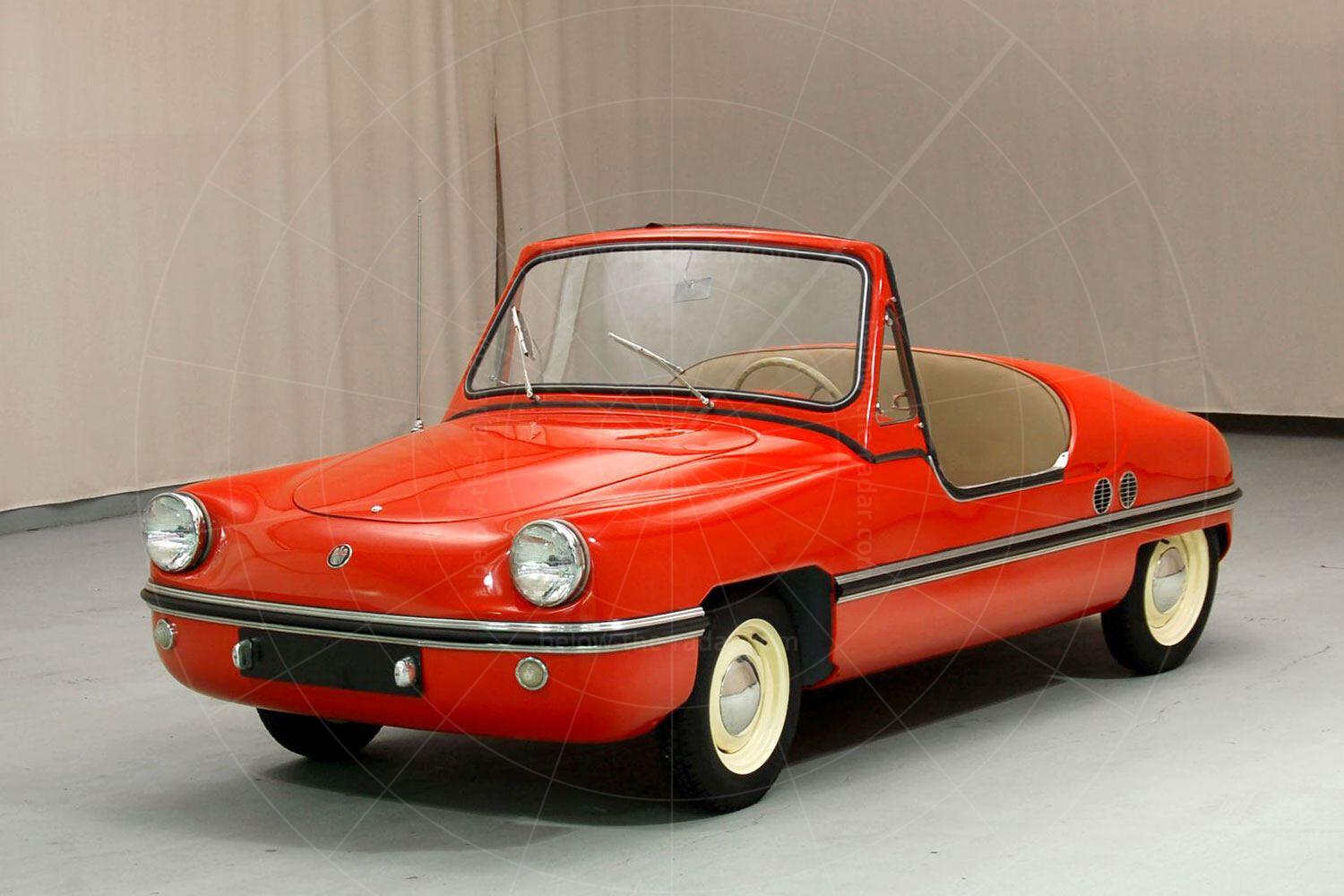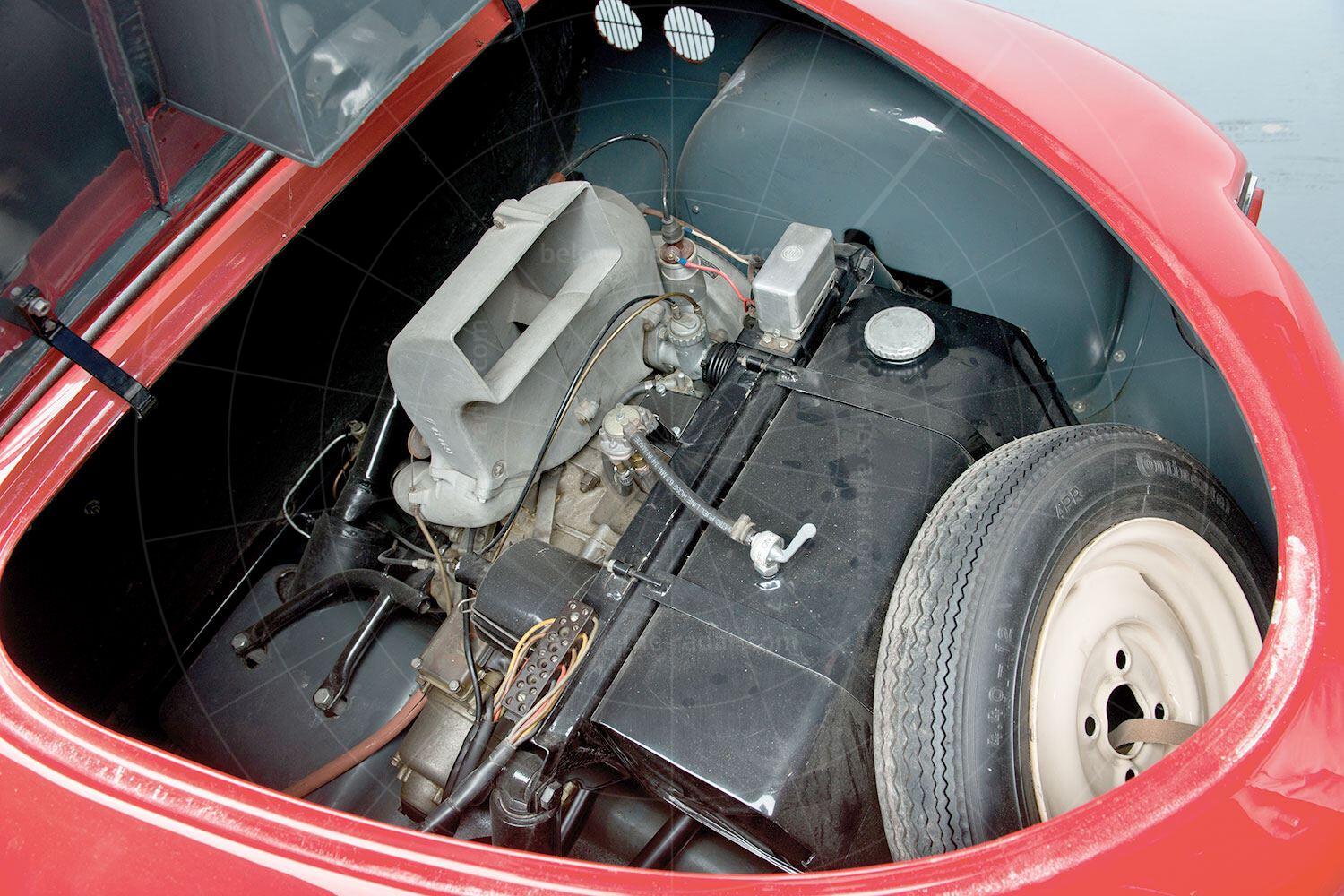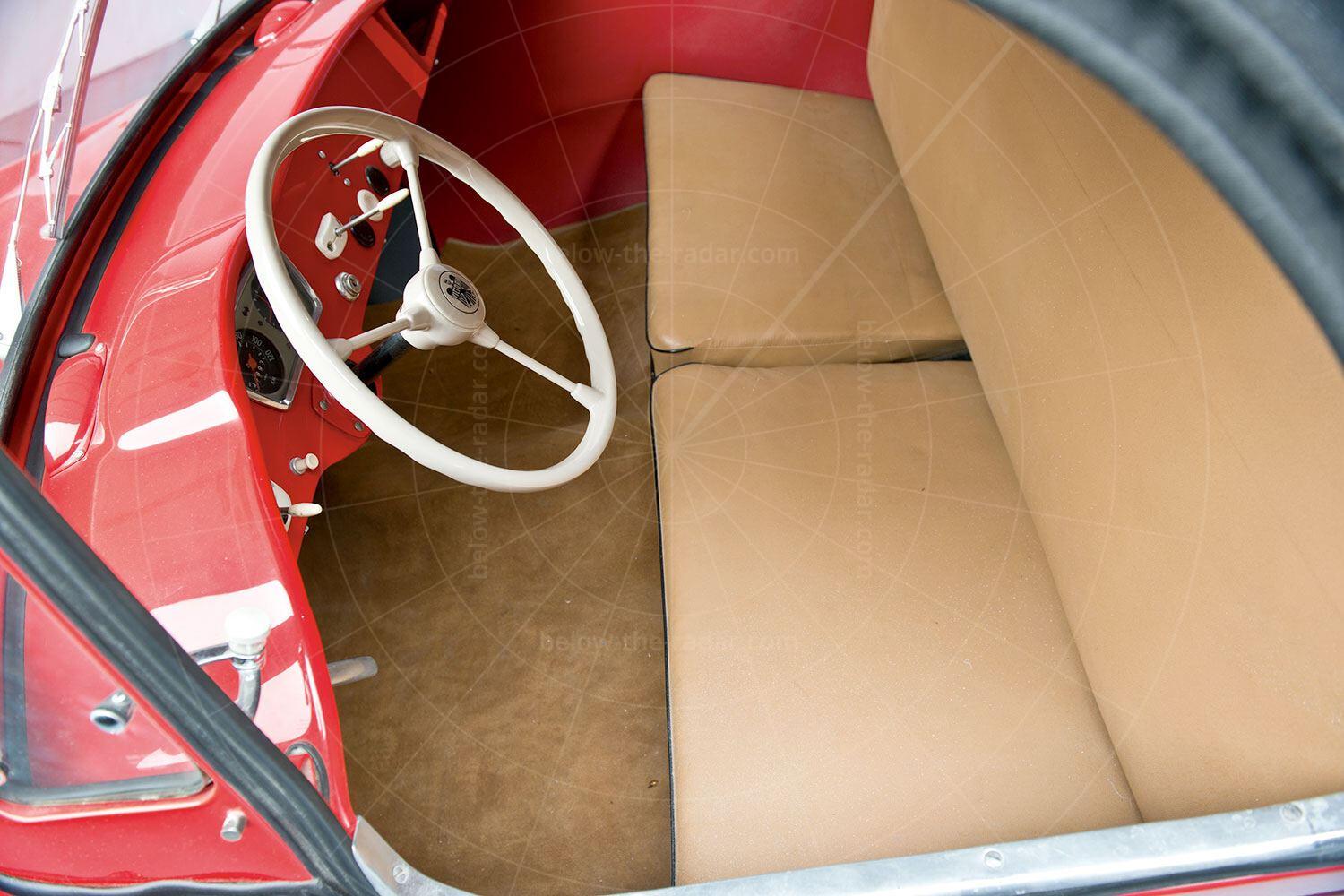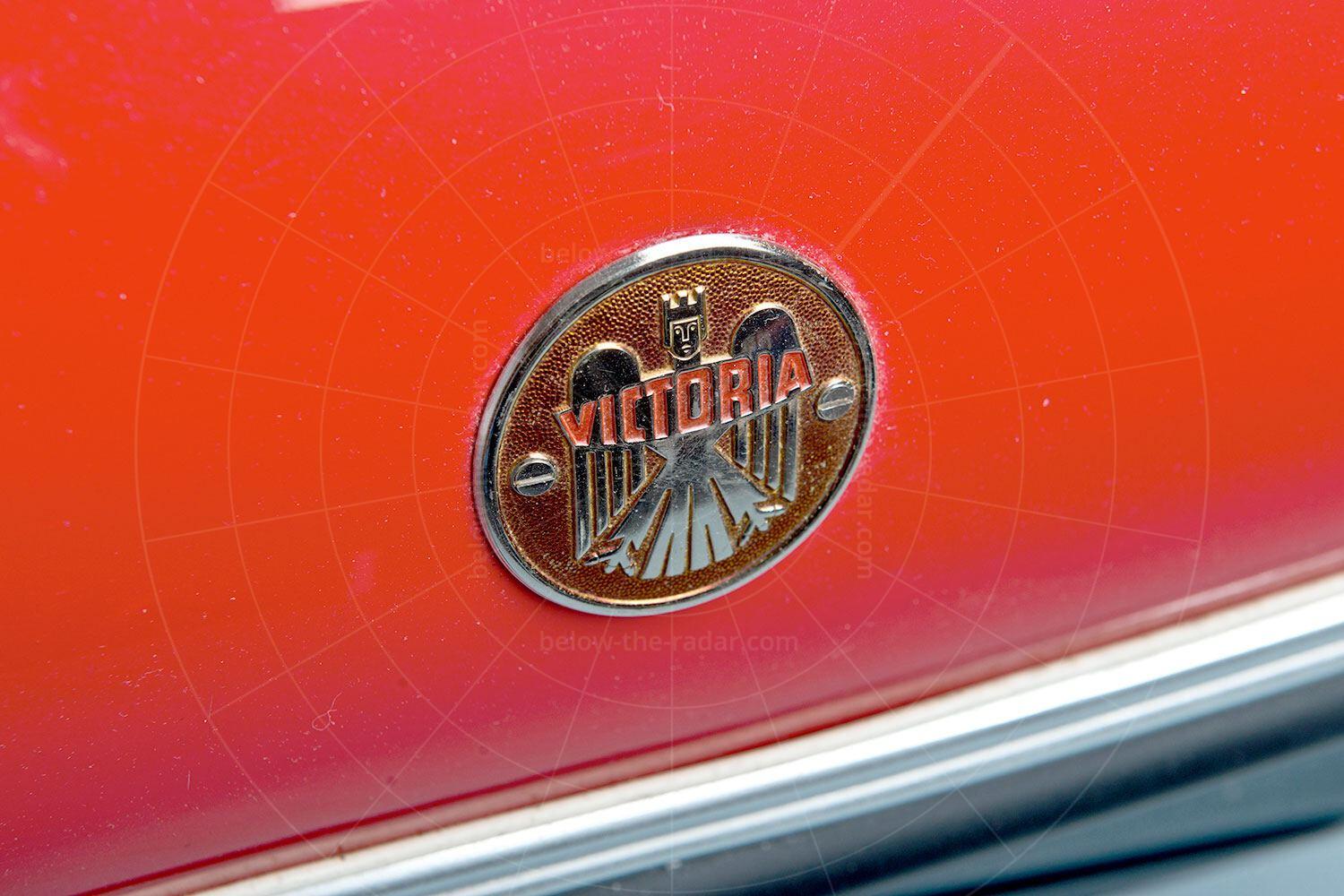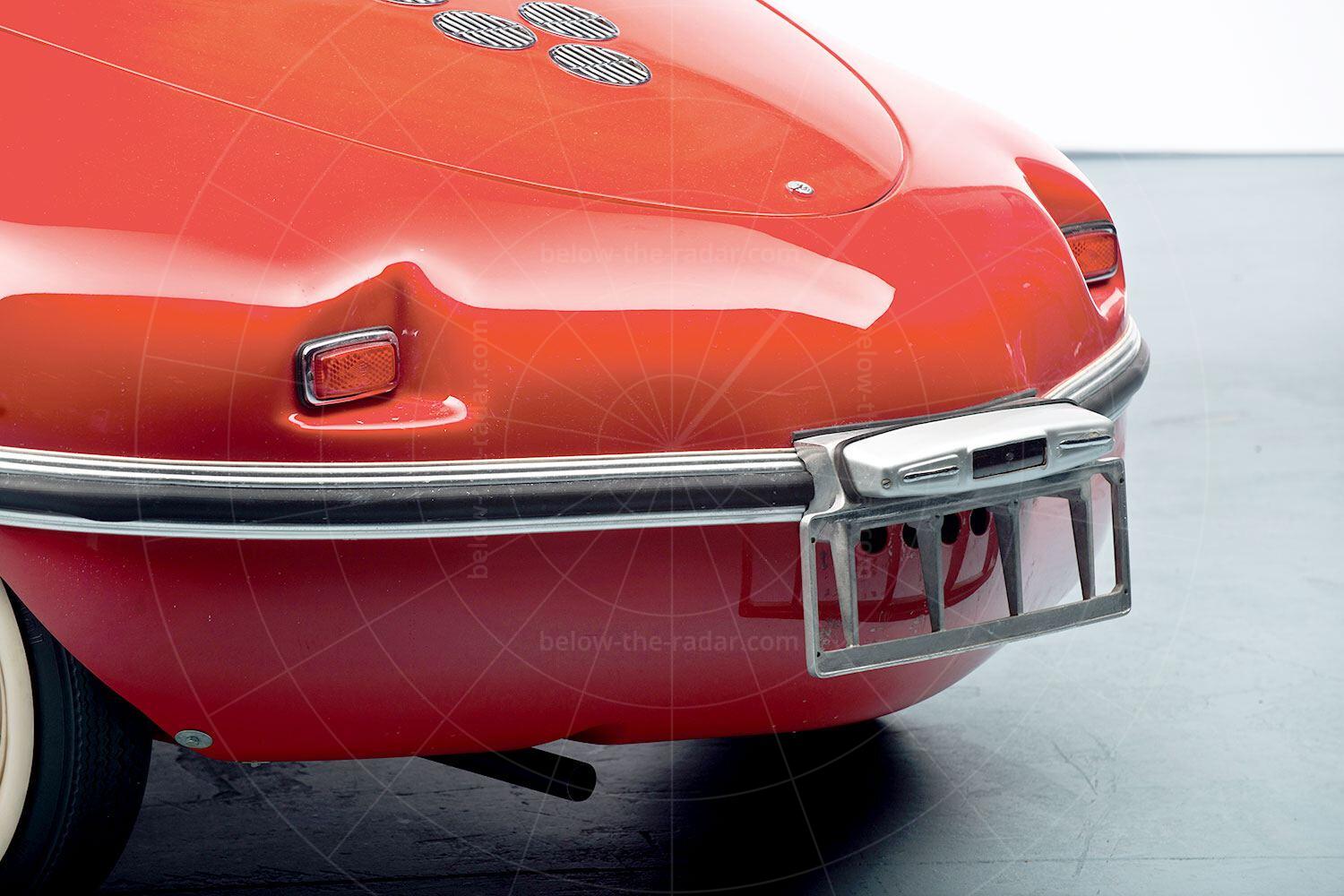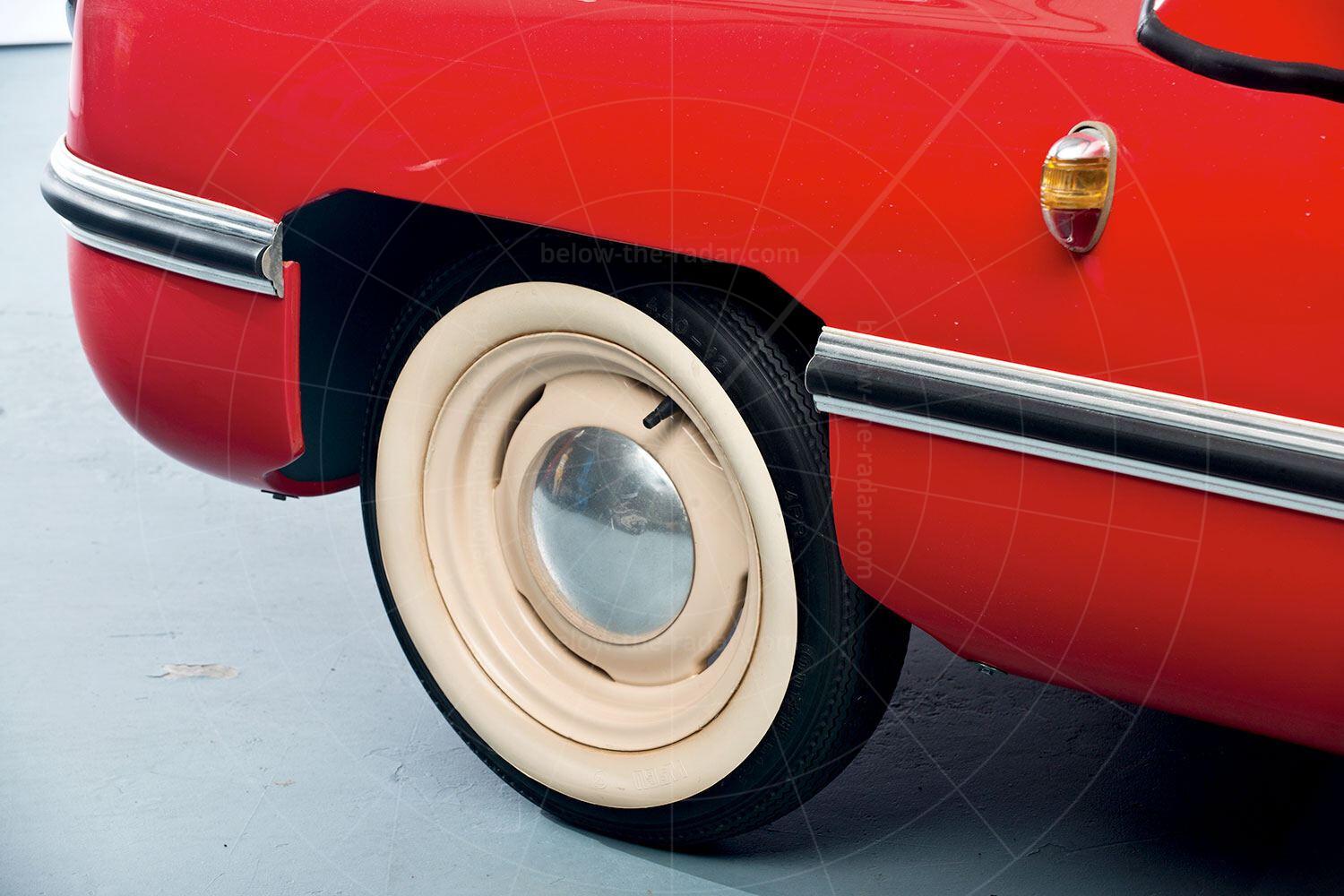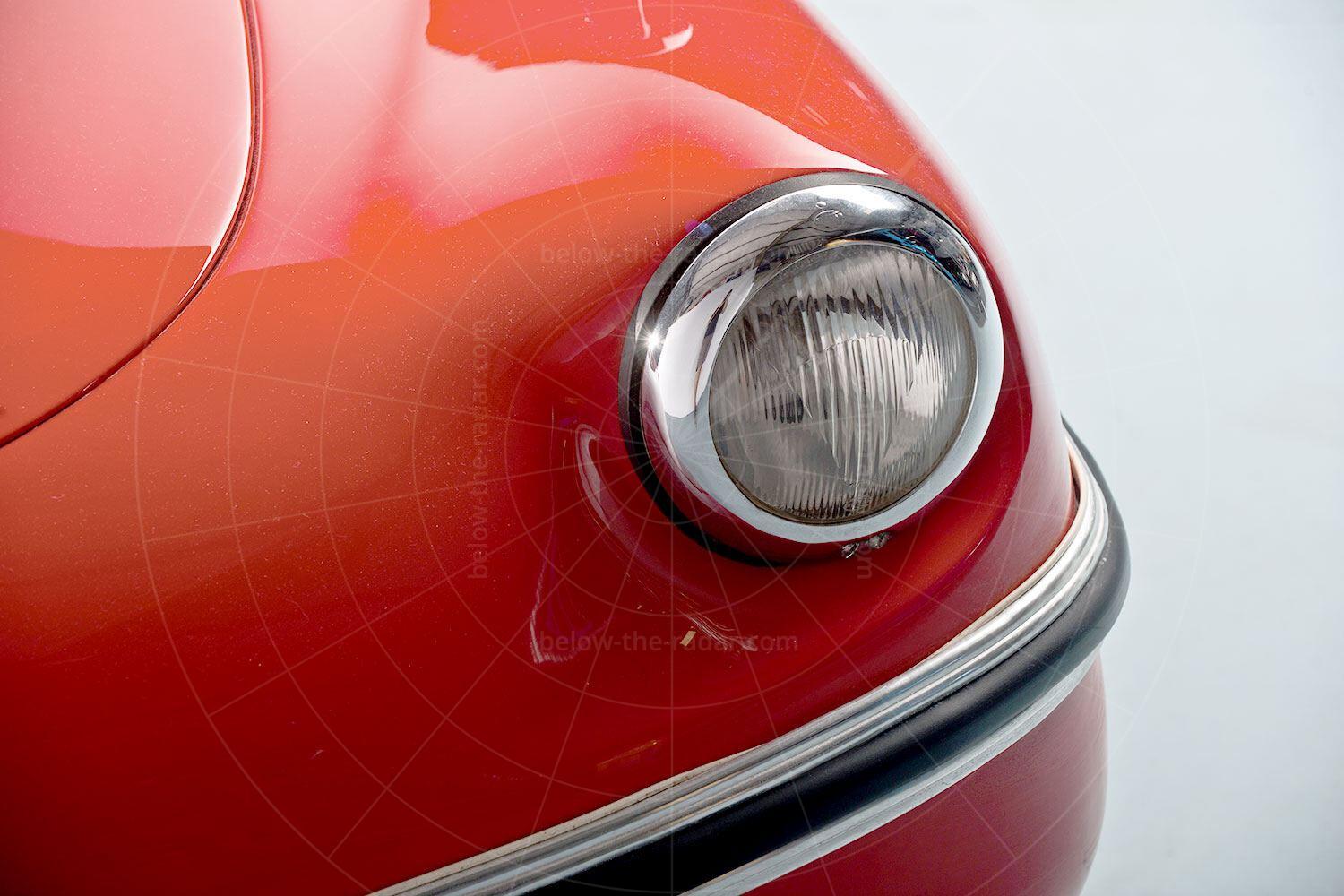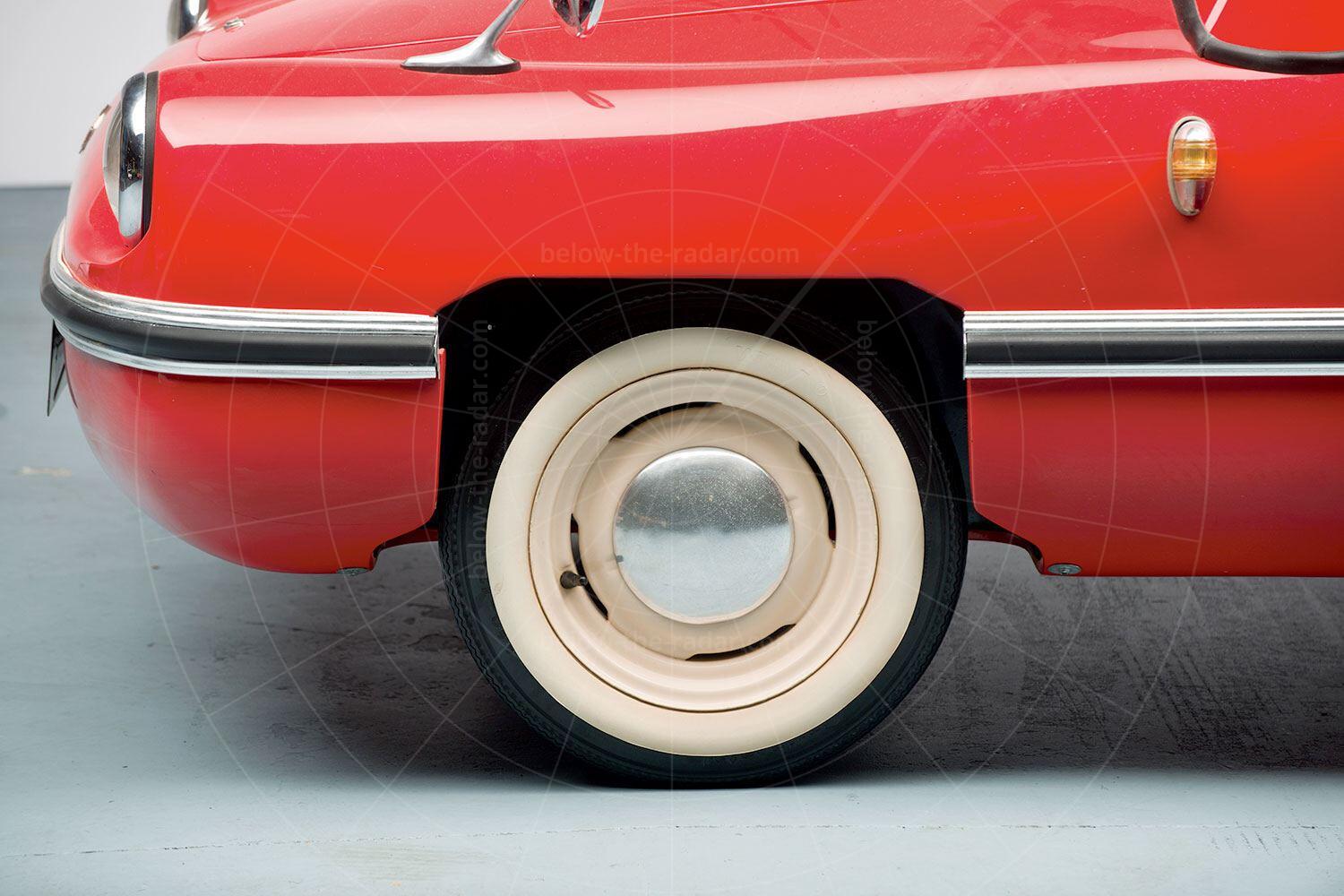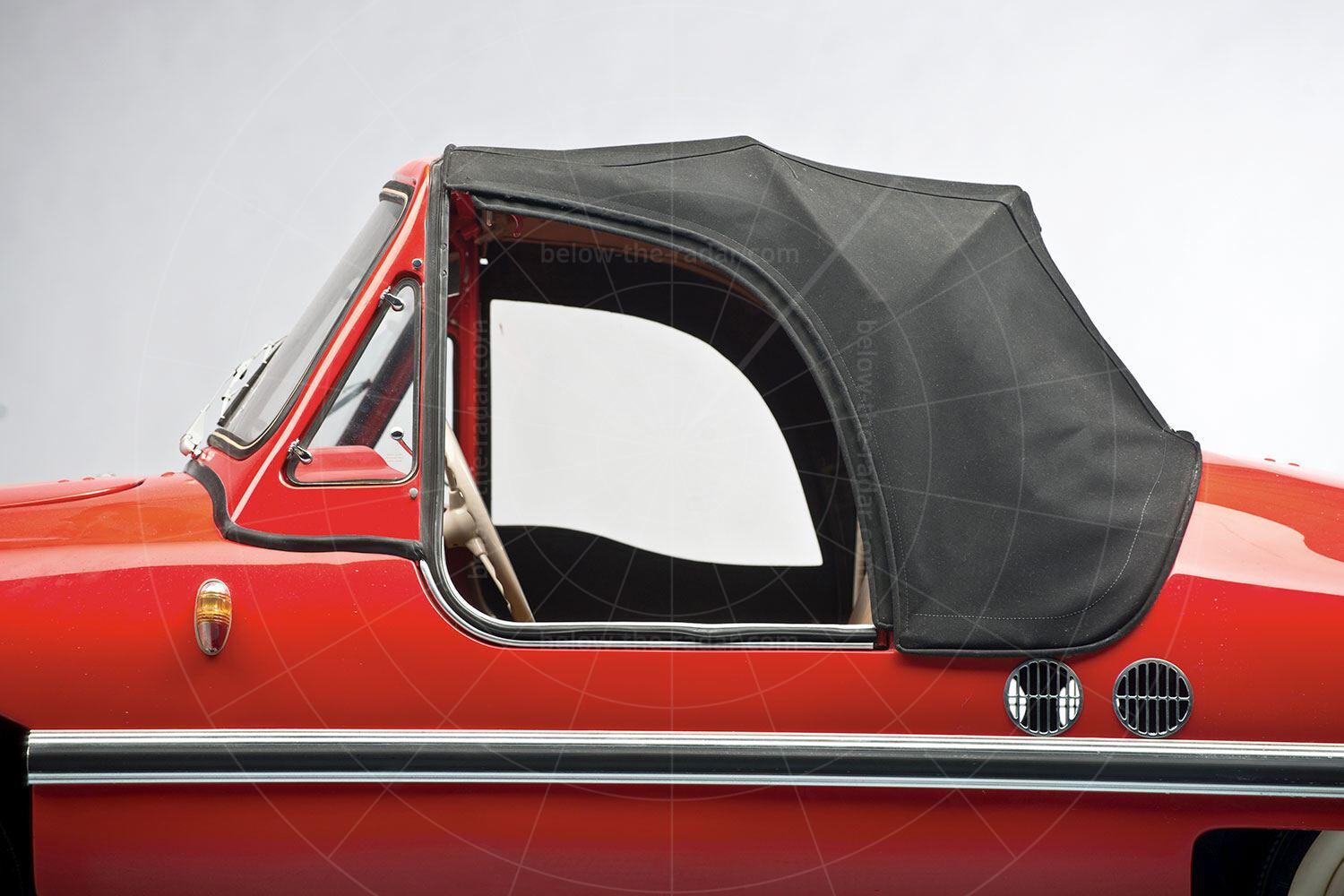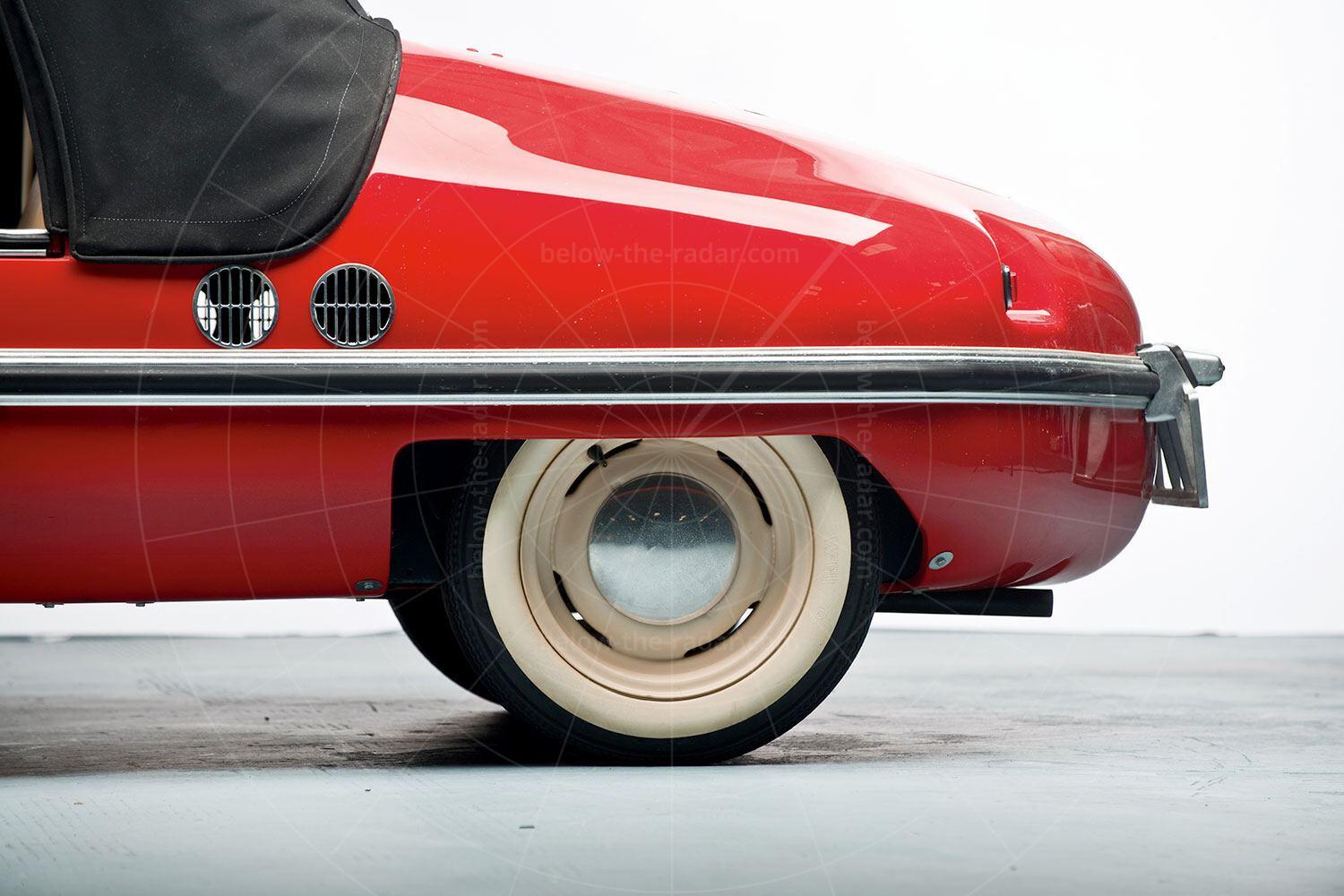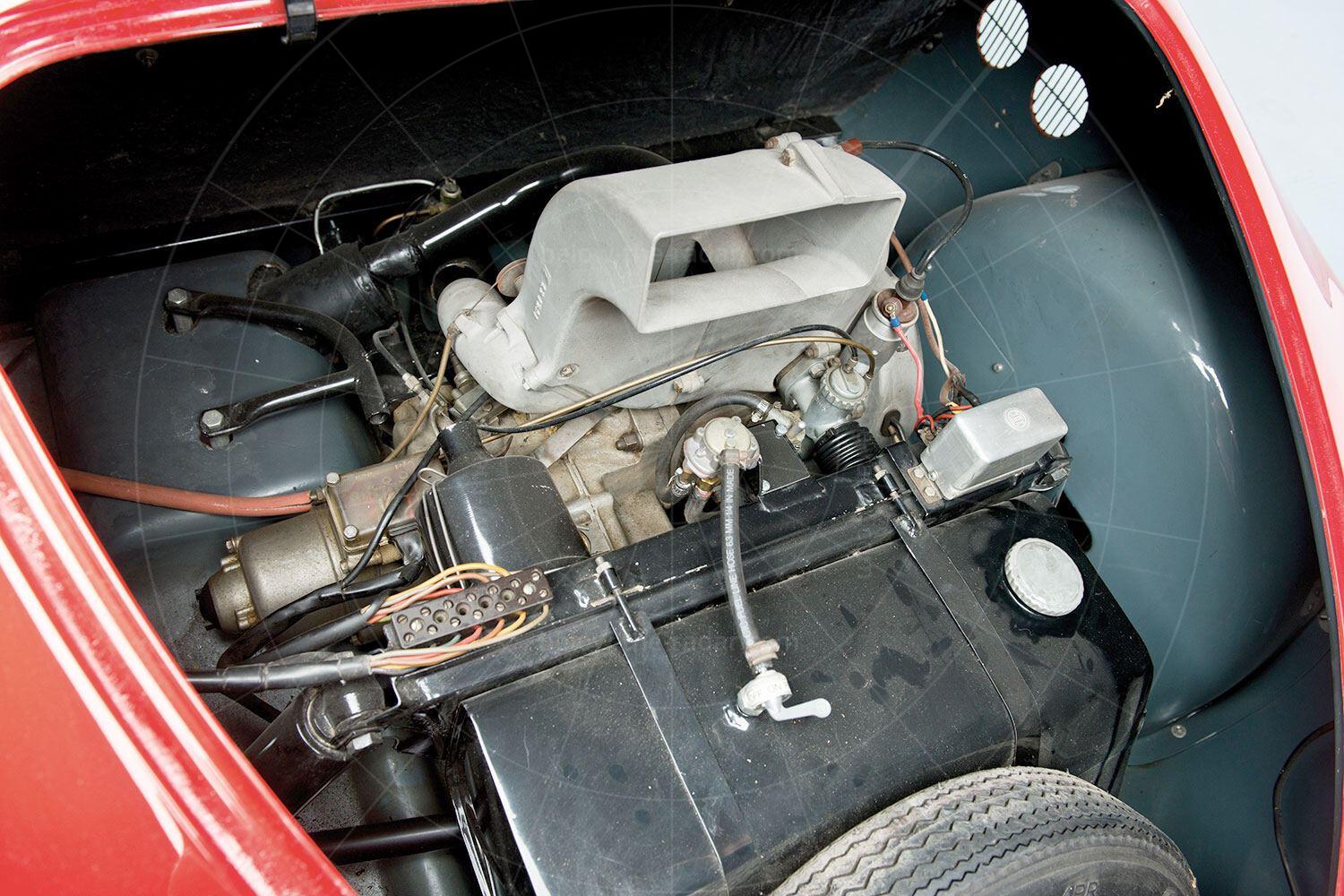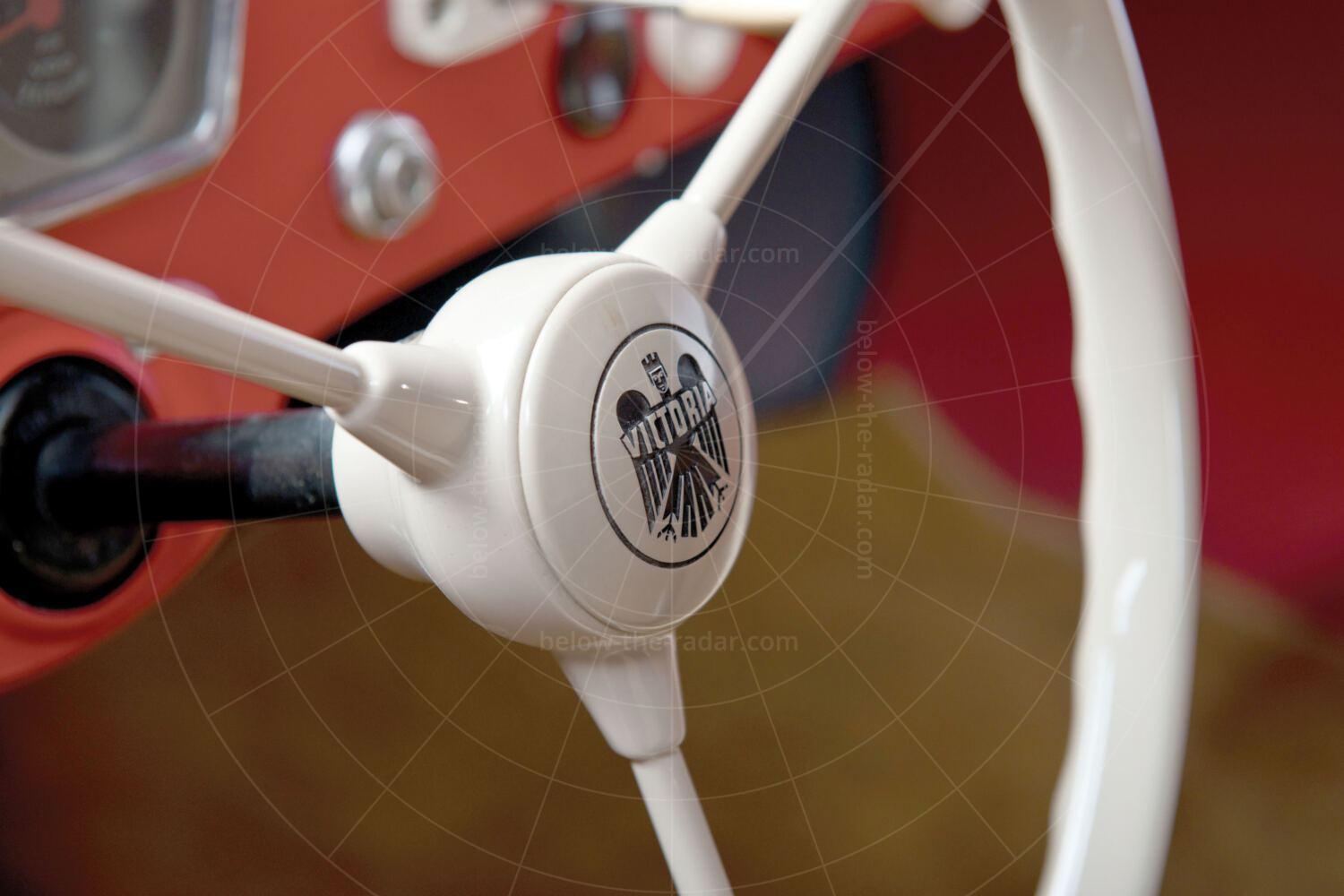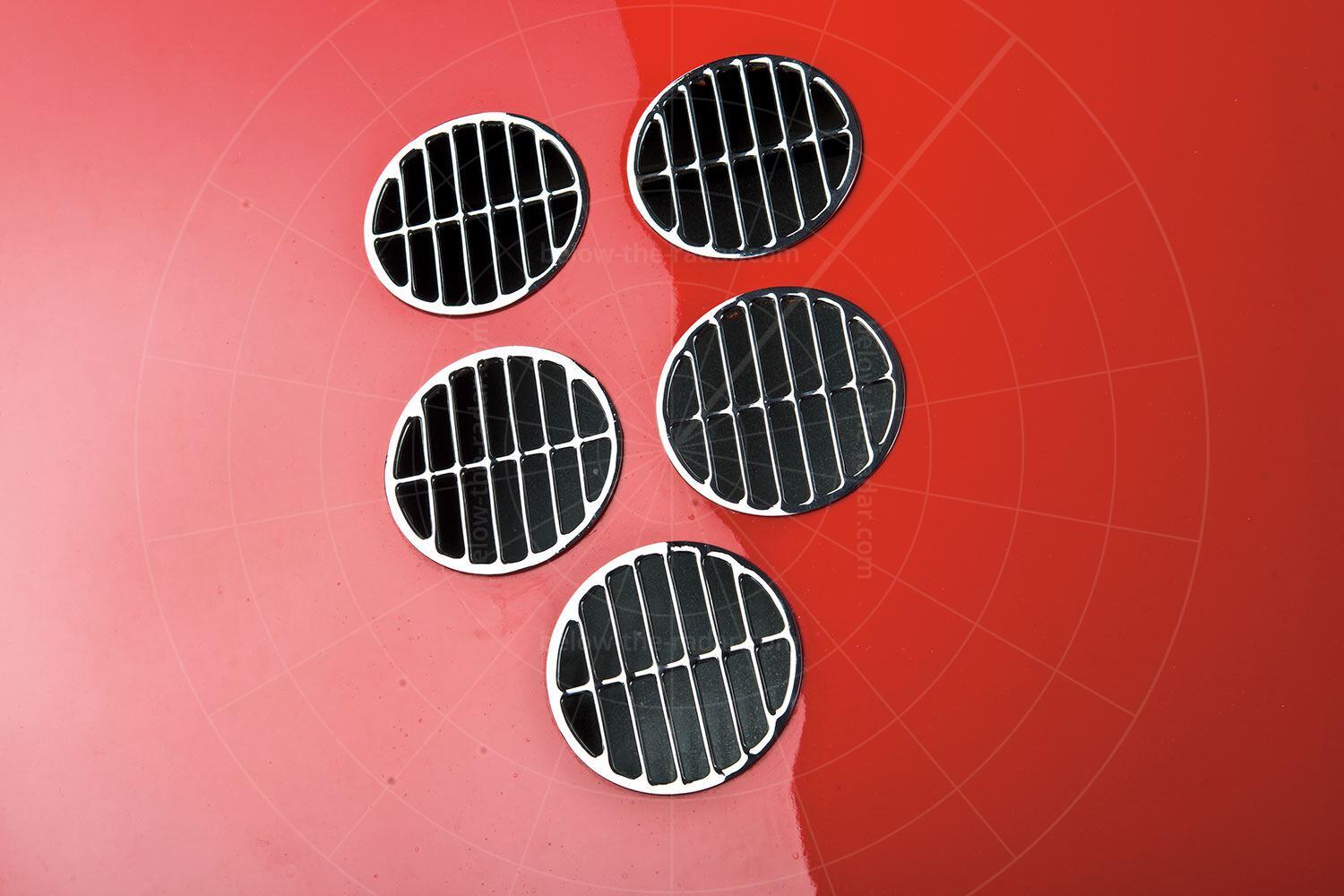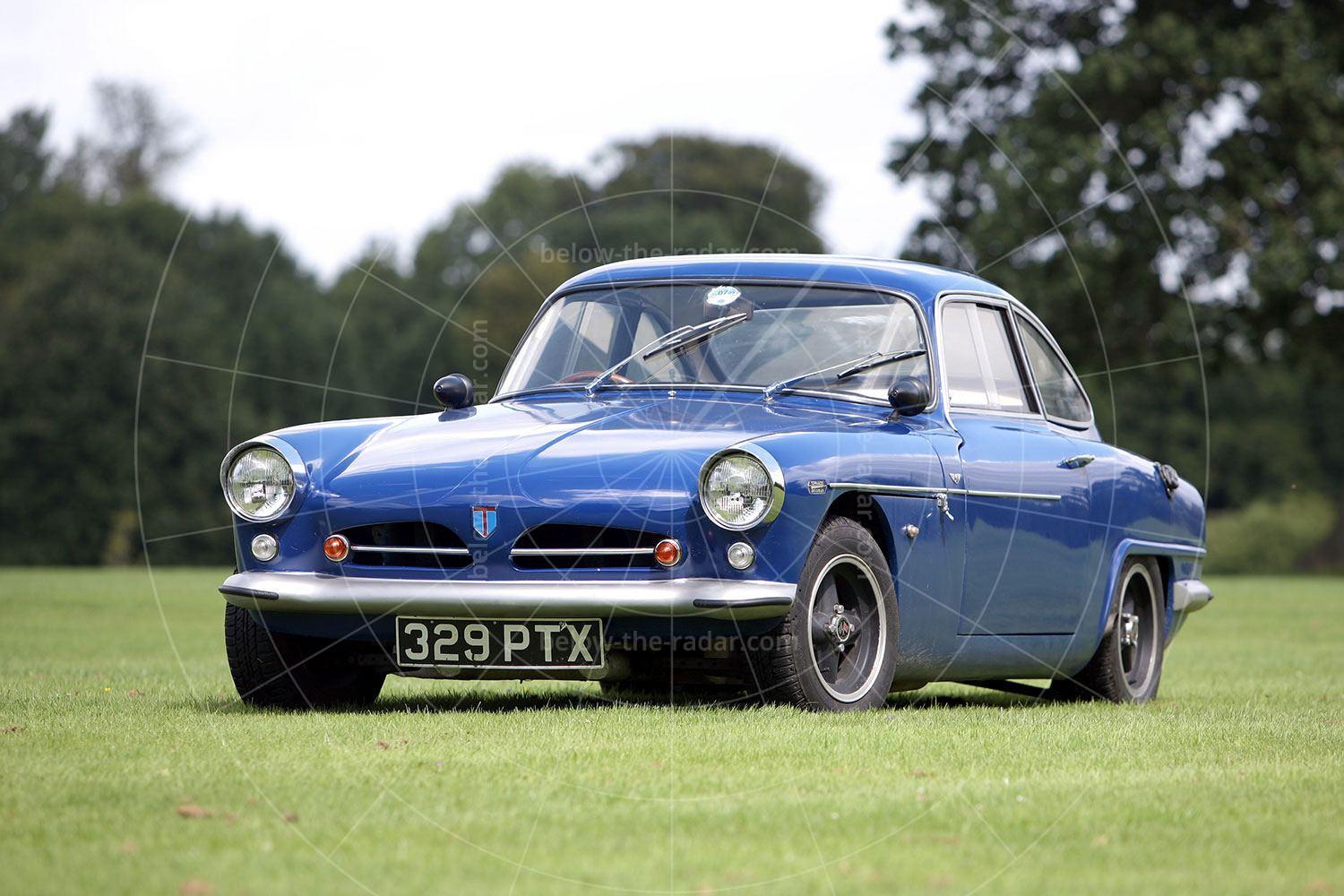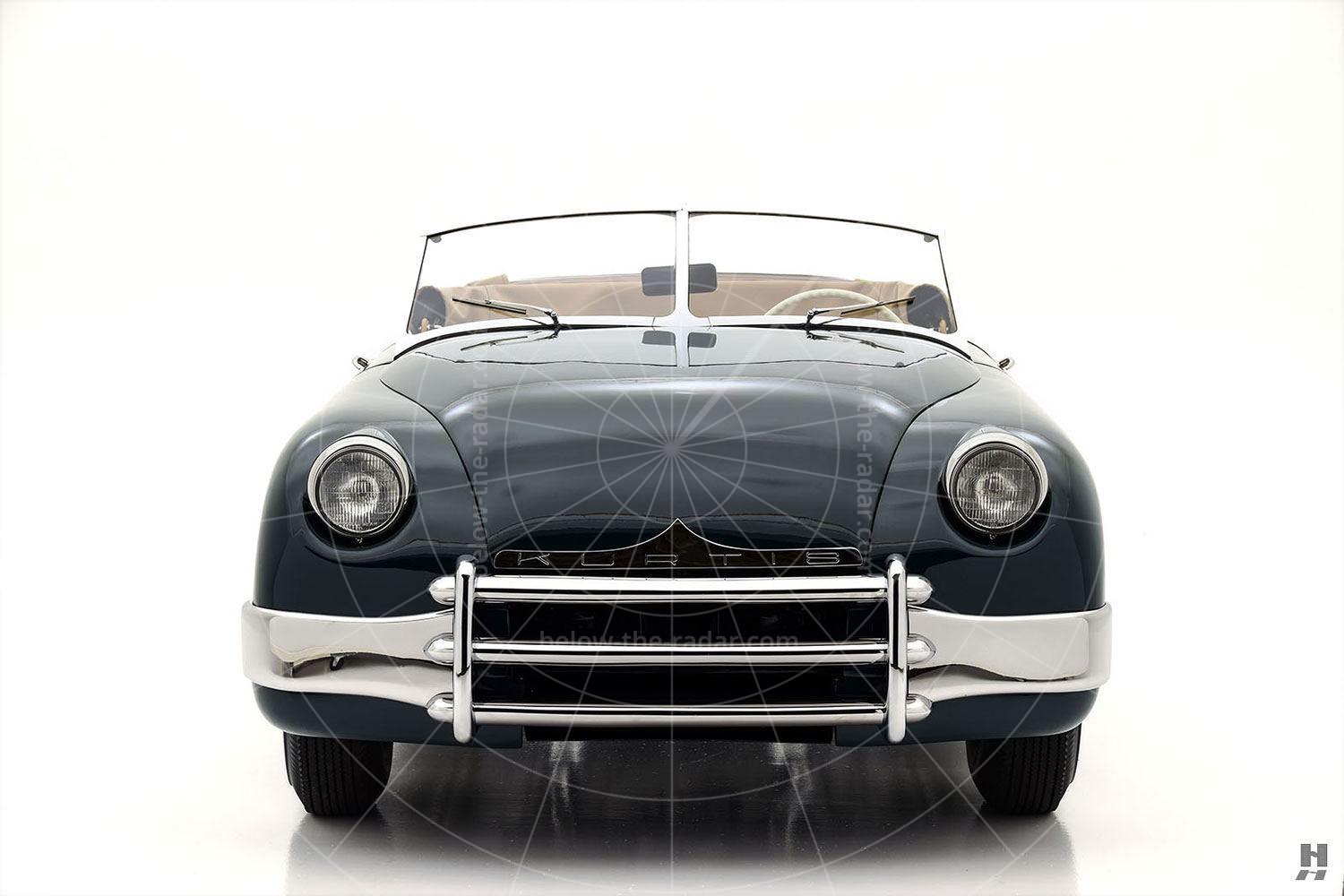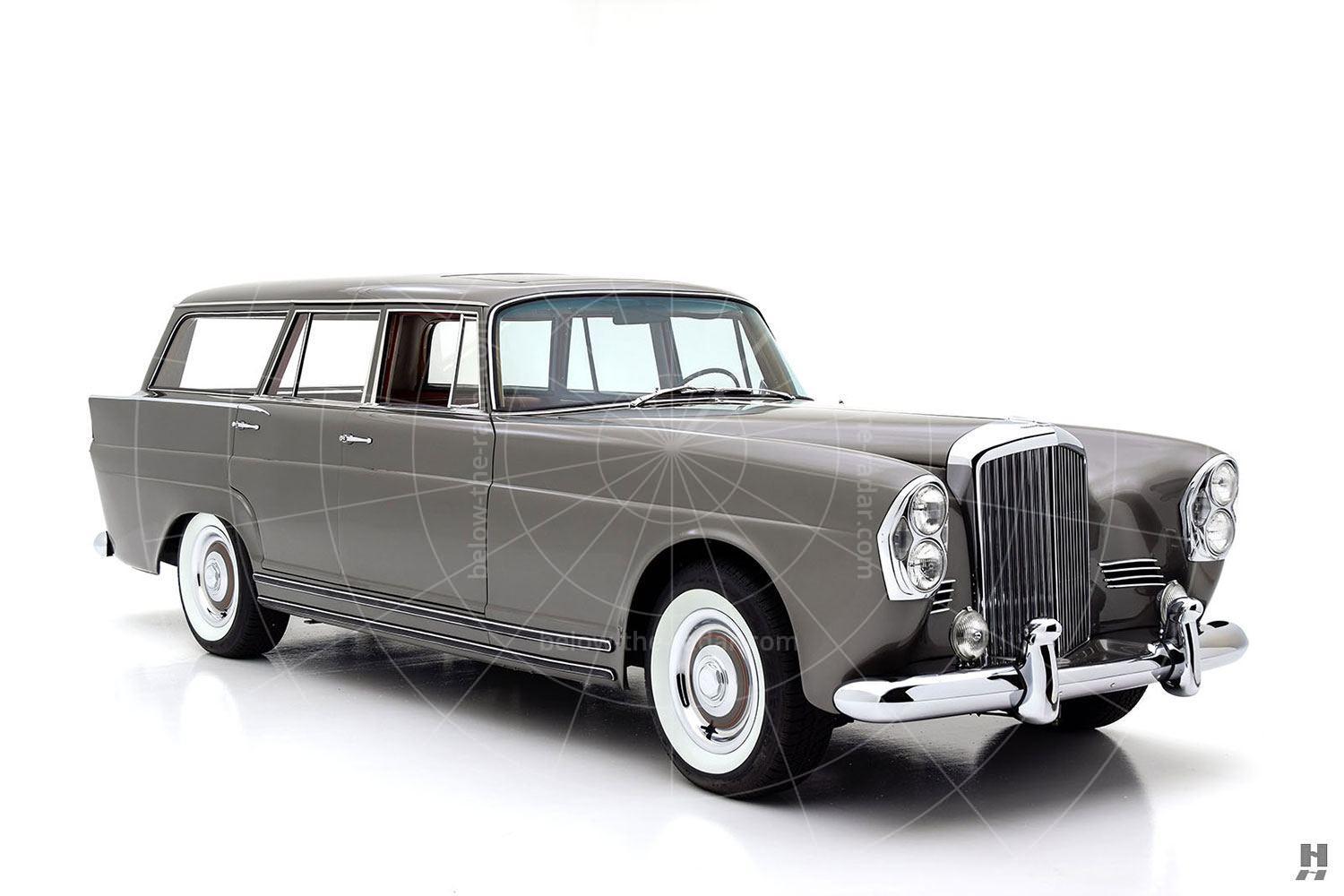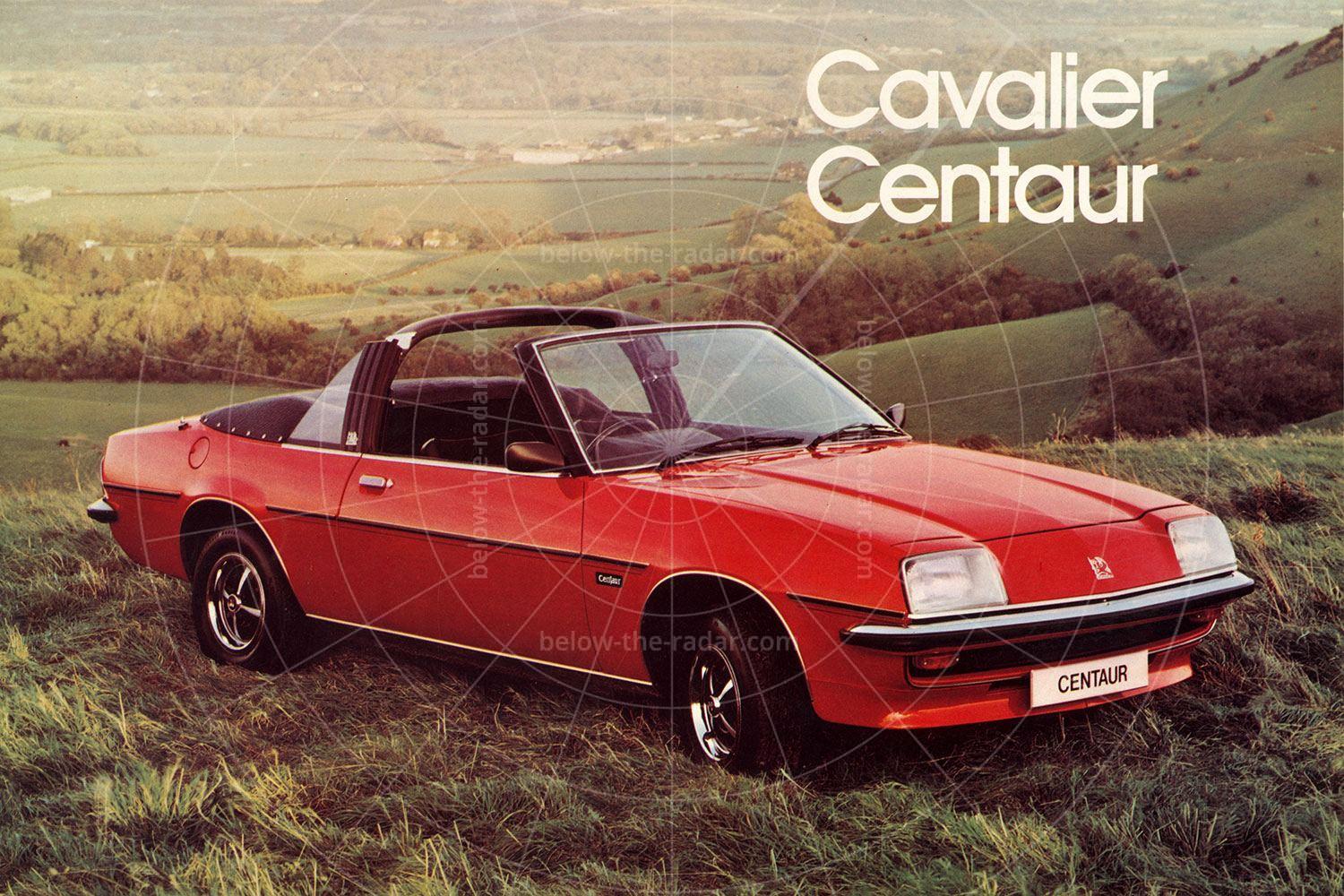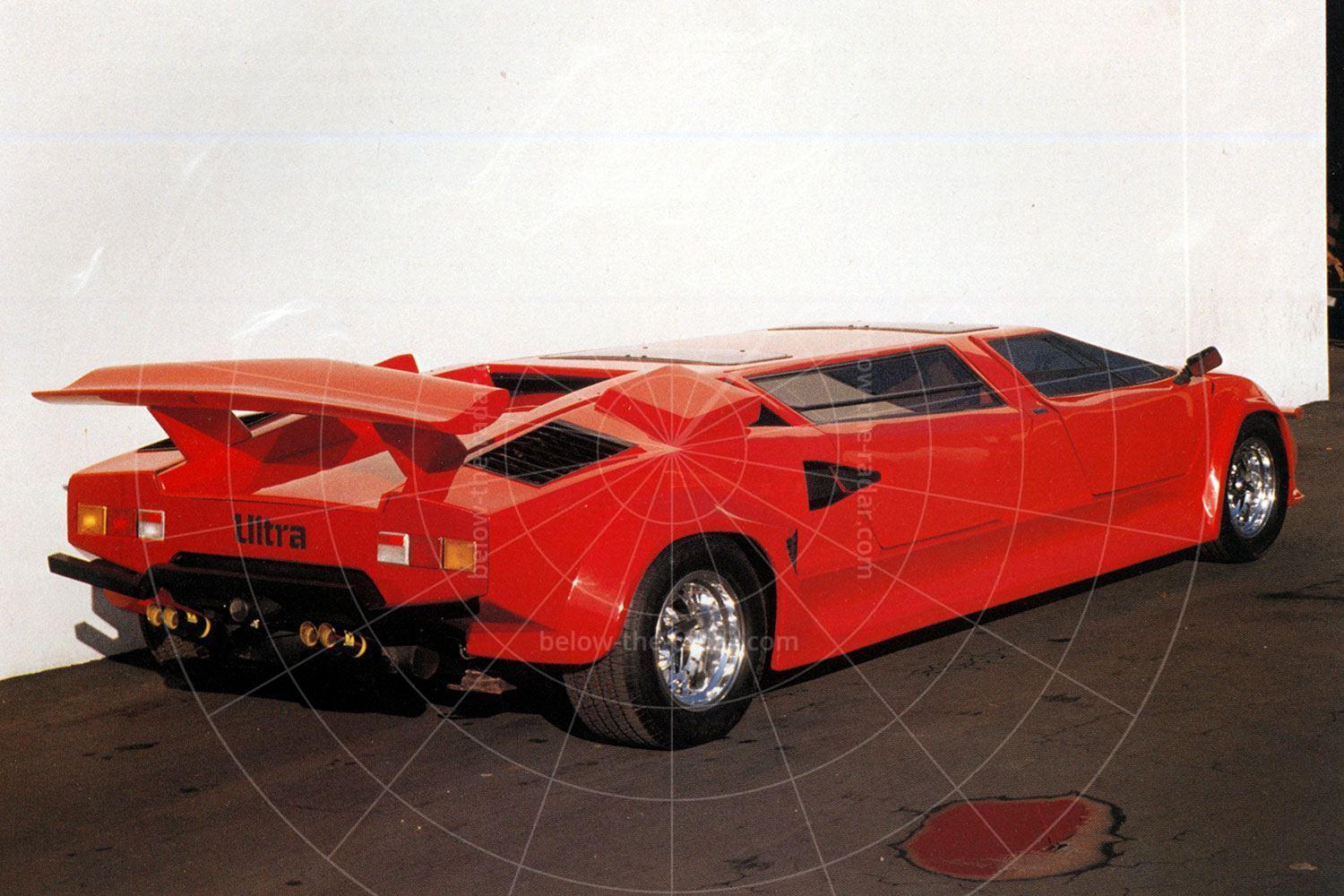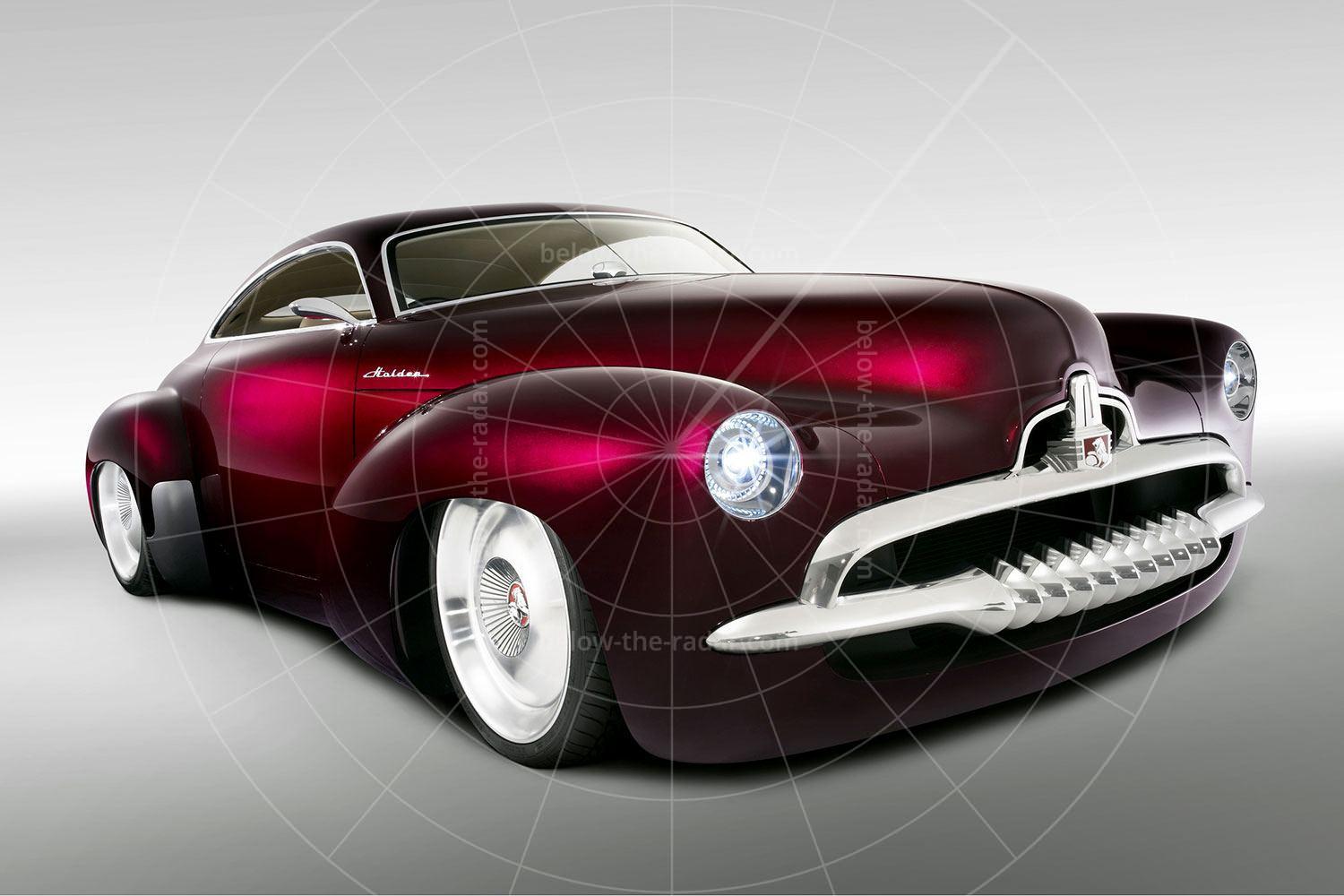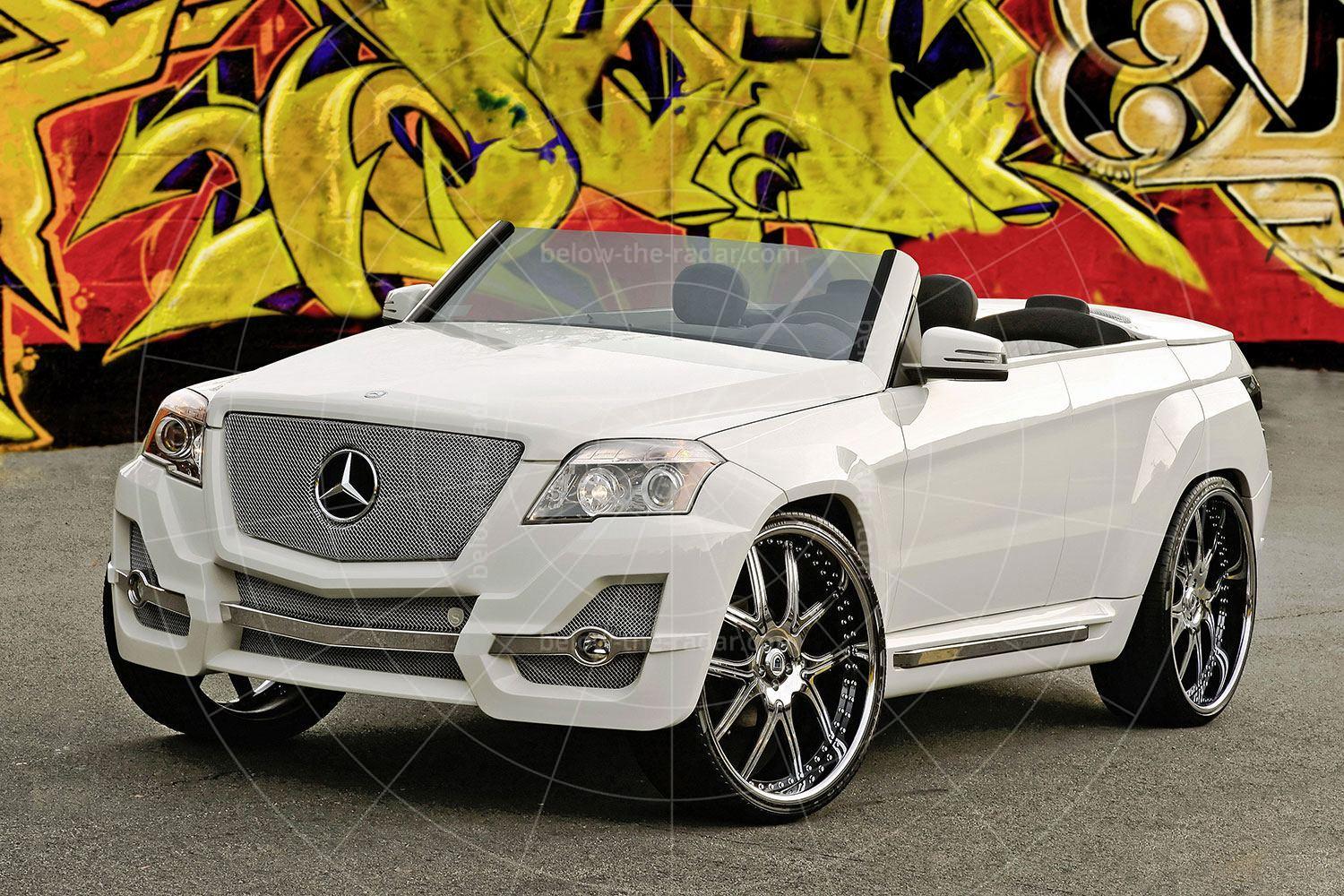With his BAG Spatz, Harald Friedrich had transformed the Brutsch 200 Spatz from an egg-shaped, flimsily-built, unsaleable three-wheeler to a strong, elegant, mid-engined four-wheeler with an excellent frame and modern car suspension and brakes. But a court case brought by Egon Brutsch was more hassle than it was worth, so Friedrich decided to walk away from the partnership that he had set up with motorcycle manufacturer Victoria to make and sell the Spatz.
At the 1955 Frankfurt Frankfurt motor show the press praised the BAG Spatz for its low, sporting, elegant lines, but they were sceptical about the low power-to-weight ratio because of the fitment of a puny 191cc single-cylinder engine. This didn't escape the attention of Victoria, which set about overhauling the car’s specifications. The company had considerable experience in servicing and maintaining the Spatz in its dealerships, and it was intimately familiar with the car's shortcomings, particularly the barely adequate engine and the absence of doors.
BAG had shown a Spatz coupé in 1955 and a rather neat gullwing-doored edition in 1956, neither of which made production because they were too heavy; there were also legal implications for building the gullwing-doored hard top. Victoria built various prototypes with hardtops and doors, but in every case they weighed too much. As a result the Spatz had to remain a roadster, but it would be powered by a new engine that was developed in-house just for the car.
Victoria was in a position to fit its own 248cc single-cylinder two-stroke engine which offered 40% more power than the 191cc Fichtel & Sachs unit. This was enough to raise the top speed by a third, from 45mph to 60mph, which made the Spatz far more usable.
The new powerplant required new rear deck cooling grilles, a new dashboard, and a taller, heavy-framed windscreen with vent windows. The changes made it virtually a new car, so it was renamed the Victoria 250.
The revamped car was also fitted with a new electric pre-selector transmission. Five speeds were selected by three pushbuttons on the dash, for reverse, neutral, and first, with second, third, and fourth selected by a small lever on the dash in conjunction with the clutch.
The first examples of the Victoria 250 were delivered in June 1957, to an enthusiastic public and press. But at that year's Frankfurt motor show held in September, it was clear that there was already too much competition from other similar products. There were just too many companies offering microcars for the market to absorb them all, and by February 1958 Victoria had decided to call a halt to production of the 250 after 729 examples had been made.
However, that wasn't quite the end of the story as the final Victoria 250s were sold by Burglengenfeld-based Burgfalke Flugzeugbau as the Burgfalke FB250.
| Vital statistics | |
|---|---|
| Produced | 1957-1958, Germany |
| Number built | 729 |
| Engine | Rear-mounted, 248cc, single-cylinder |
| Transmission | 4-speed manual, rear-wheel drive |
| Power | 14bhp |
| Top speed | 60mph |
- The Victoria 250 pictured was sold by RM Sotheby's for $37,375 in 2013. Many thanks to RM Sotheby's for the use of its pictures to illustrate this article.

